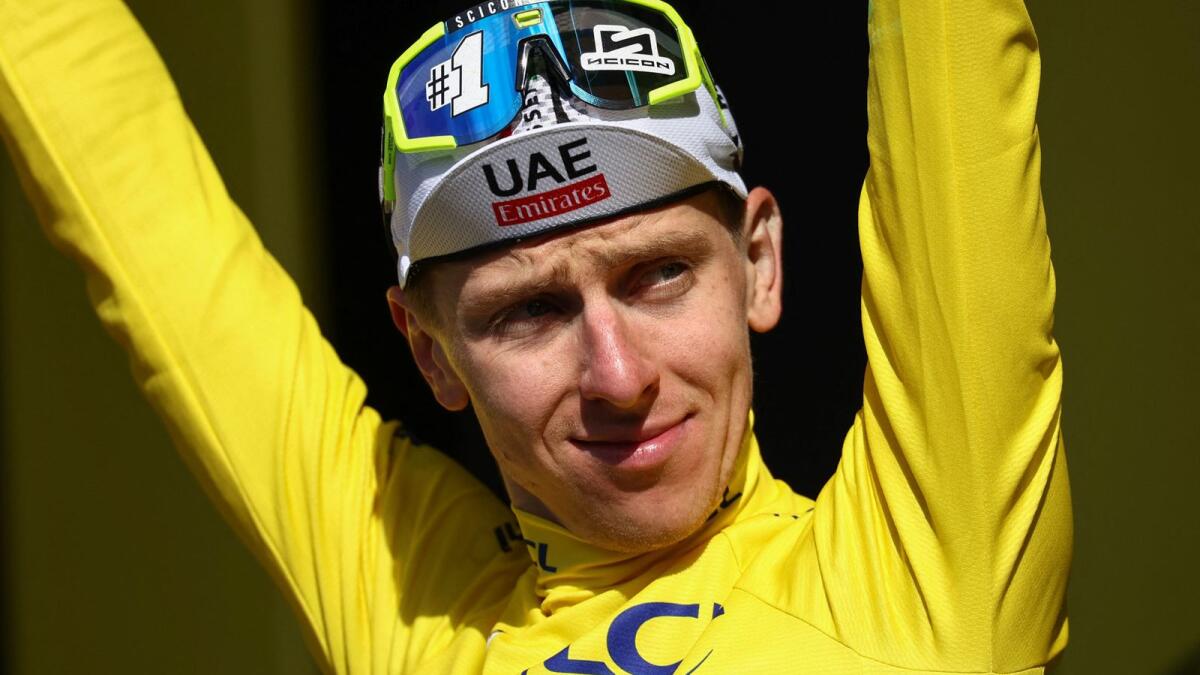UAE Team Emirates’ Tadej Pogacar and Jonas Vingegaard have taken on different strategies at this year’s Tour de France. Pogacar has been attacking whenever possible, while Vingegaard has been more risk-averse. Pogacar has managed to open a gap on Vingegaard in several stages, riding on the momentum of his Giro d’Italia form. On the other hand, Vingegaard, who has not raced in three months due to injury, has been focused on limiting his losses.
Vingegaard’s cautious approach was evident when he refused to collaborate with Pogacar after Roglic was dropped from the pack. He prioritized safety, especially after a puncture forced him to ride on a teammate’s bike. Despite opportunities to gain time on other rivals, Vingegaard chose to stick to his strategy. Pogacar, on the other hand, criticized Vingegaard’s approach, accusing his team of underestimating other competitors and being overly focused on him.
Overall, Pogacar leads Evenepoel by 33 seconds in the standings, with Vingegaard in third place, 1:15 off the pace, and Roglic in fourth place, a further 21 seconds back. As the race progresses, it will be interesting to see how the dynamics between the riders play out. With Vingegaard’s cautious approach and Pogacar’s aggressive tactics, the race for the podium spots is sure to be intense. Pogacar’s pursuit of becoming the first rider to achieve the Giro-Tour double adds to the intrigue of this year’s Tour de France.
As Pogacar continues to push the pace and attack whenever possible, Vingegaard’s resilience and defensive riding may prove to be a strategic move in the long run. By focusing on limiting his losses and staying close to the leading pack, Vingegaard could be setting himself up for a strong finish in the final week of the race. With the margin between the top riders being relatively close, every decision and move on the road will have a significant impact on the final standings. It will be crucial for both Pogacar and Vingegaard to maintain their focus and form as the race enters its decisive stages.
The contrasting strategies of Pogacar and Vingegaard highlight the tactical complexity of professional cycling. While Pogacar’s aggressive approach has allowed him to gain time on his rivals, Vingegaard’s more conservative tactics have kept him within striking distance of the lead. As the race unfolds, the dynamics between the two riders and their teams will continue to evolve, shaping the outcome of the Tour de France. The battle for the podium spots promises to be a thrilling spectacle, with the potential for unexpected twists and turns in the remaining stages of the race.
In the end, the Tour de France is a test of not only physical strength but also strategic acumen and mental fortitude. The rivalry between Pogacar and Vingegaard embodies the competitive spirit of the sport, with each rider bringing their unique approach to the race. With the stakes high and the competition fierce, the Tour de France is sure to deliver an exciting conclusion as the riders vie for the coveted yellow jersey. Fans of cycling can look forward to an exhilarating battle between two of the sport’s brightest talents as they race towards the finish line in Paris.










